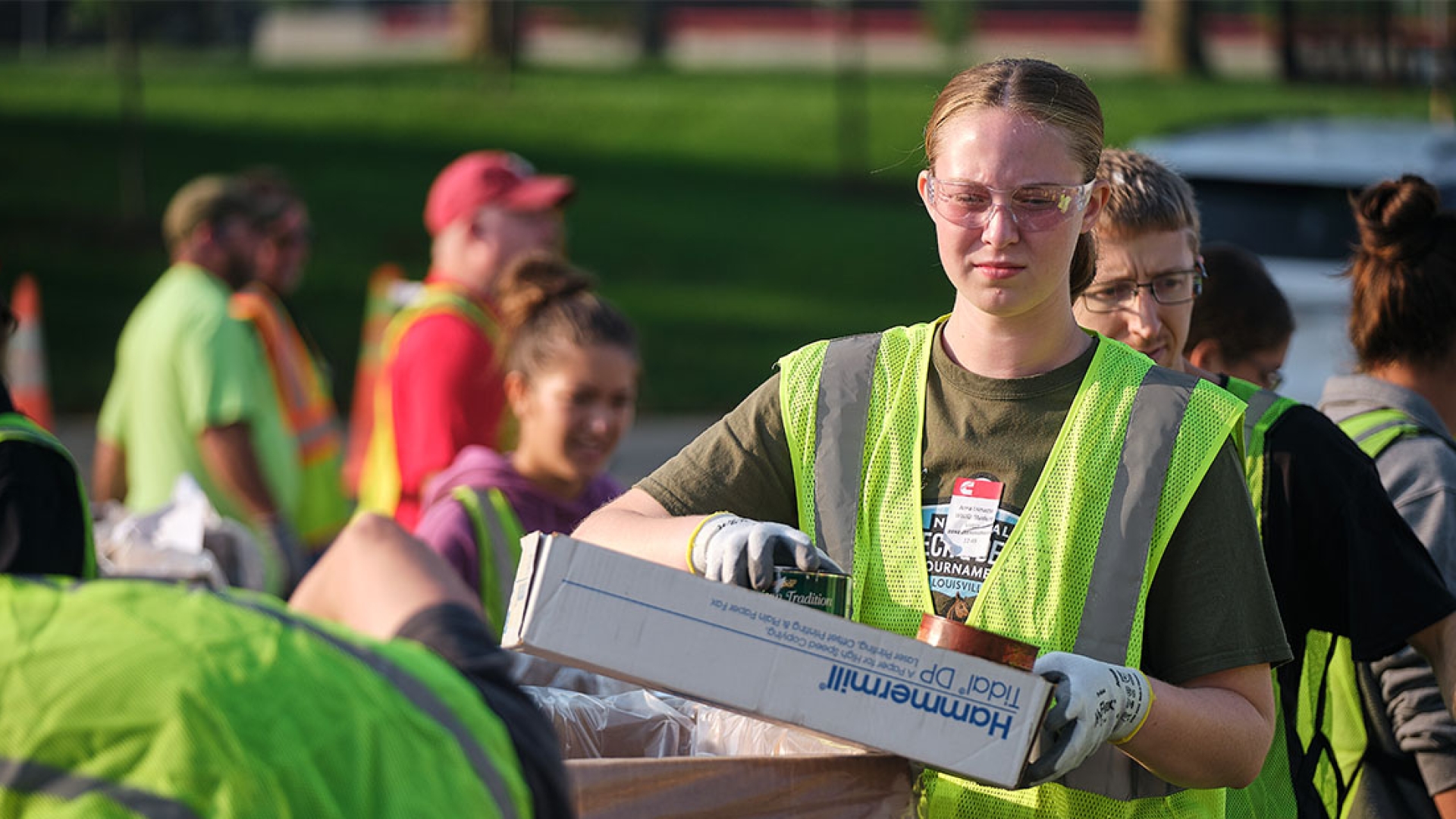More than 140 tons of waste saved from landfills
By Cummins Inc., Global Power Technology Leader

E-waste is the world’s fastest-growing domestic waste stream, according to the United Nations; yet, less than 18% of electronics are collected and recycled. Community recycling days are helping to change that by limiting what ends up in landfills, incinerators and other means of waste disposal. Once a year, however, Cummins Inc. provides the place, manpower, and funding to oversee the proper, safe disposal of hard-to-recycle items like waste paints and electronics through Cummins’ Community Recycling Day.
The Columbus Engine Plant (CEP) is one of several Cummins plants to hold this event during Environmental Month. The combination of community involvement and responsible environmental practices supports CEP’s internal Cummins certification of Zero Disposal (zero landfill) for the site, which it acquired in June of 2018.
Zero disposal and landfill status
One of the Cummins requirements for attaining zero landfill status is that a site has to successfully recycle 100% of its waste and can prove four consecutive quarters of zero waste. Keeping materials out of the landfill and conserving natural resources.
Resources whenever possible has been important to CEP as it falls in line with the overall Cummins commitment to environmental stewardship.
Plant goals of zero landfill status have extended to surrounding communities too, which have consistently participated in properly disposing their waste during Cummins Community Recycling Day. As proof, the popularity of Cummins Recycling Day has grown from 150 cars lined up to drop items off at its inception in 2010, to over 1,500 cars participating last year.
Through this event held in Columbus, Ind. (U.S.) and another at the Jamestown Engine Plant (JEP) in Jamestown, New York (U.S.), CEP and JEP have overseen the responsible disposal of more than 370 tons of household waste over a five-year period. That’s waste equivalent to 92 elephants – imagine over 7 Olympic-sized swimming pools full of waste.
With the help of partners – hundreds of Cummins employee volunteers, vendors, organizations, and local residents – these plants have combined a positive impact on their communities they serve, aligning with Cummins core mission. And they’ve done it while diverting batteries, tires, paint, electronics and more from settling in landfills, saving countless people and wildlife from serious health risks that can result from toxic, corrosive chemicals and substances such as mercury, lead and cadmium leaching into the soil and ground water.
“One of the items that got my attention and the attention of many of our volunteers was the number of old TVs we saw with the cathode-ray tubes,” said David Wehrkamp, former Health, Safety and Environment Leader at CEP. “There were some of the big heavy ones with the wood paneling. I didn’t think people still had them, but they do.”
Older TVs with cathode-ray tubes typically hold lead, cadmium-based phosphorus and other toxic chemicals that make them potentially dangerous and hard to recycle. Many places in the United States charge a few for handling them, which underscores the importance of events like this which take them at no cost.
So, how many tons of waste will Cummins’ recycling day divert from landfills this year? Stay tuned to find out.
Learn more about Cummins’ Destination Zero strategies.
Author Profiles

Cummins Inc., Global Power Technology Leader
Cummins Inc., a global power leader, is committed to powering a more prosperous world. Since 1919, we have delivered innovative solutions that move people, goods and economies forward. Our five business segments—Engine, Components, Distribution, Power Systems and Accelera™ by Cummins—offer a broad portfolio, including advanced diesel, alternative fuel, electric and hybrid powertrains; integrated power generation systems; critical components such as aftertreatment, turbochargers, fuel systems, controls, transmissions, axles and brakes; and zero-emissions technologies like battery and electric powertrain systems and electrolyzers. With a global footprint, deep technical expertise and an extensive service network, we deliver dependable, cutting-edge solutions tailored to our customers’ needs, supporting them through the energy transition with our Destination Zero strategy. We create value for customers, investors and employees and strengthen communities through our corporate responsibility global priorities: education, equity and environment. Headquartered in Columbus, Indiana, Cummins employs approximately 70,000 people worldwide and earned $3.9 billion on $34.1 billion in sales in 2024.
Related Tags